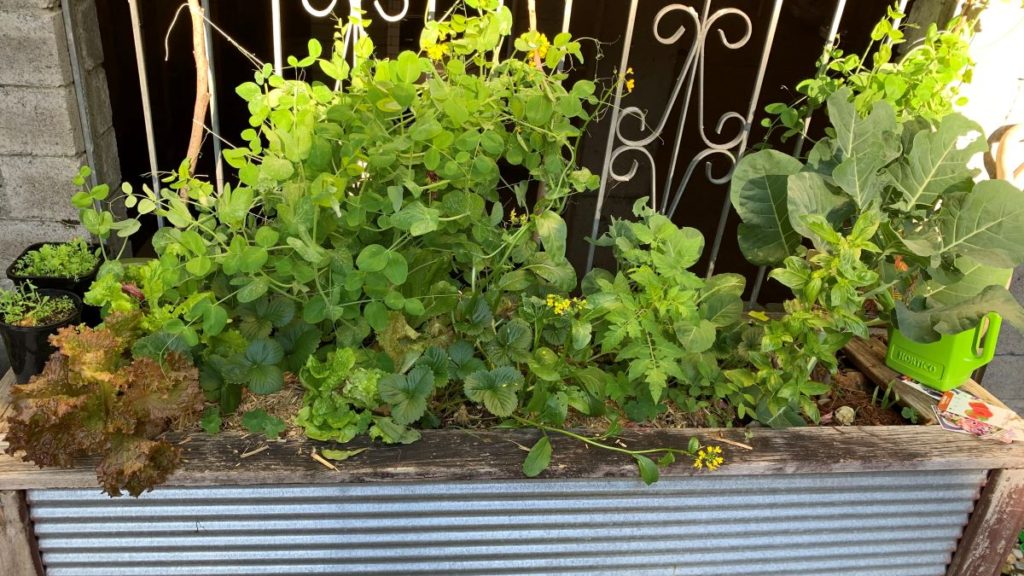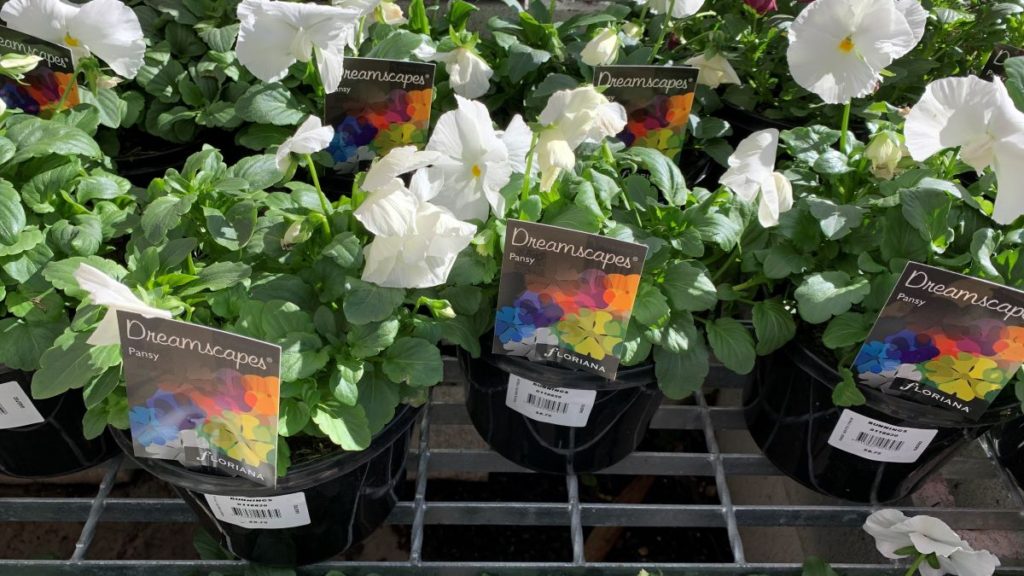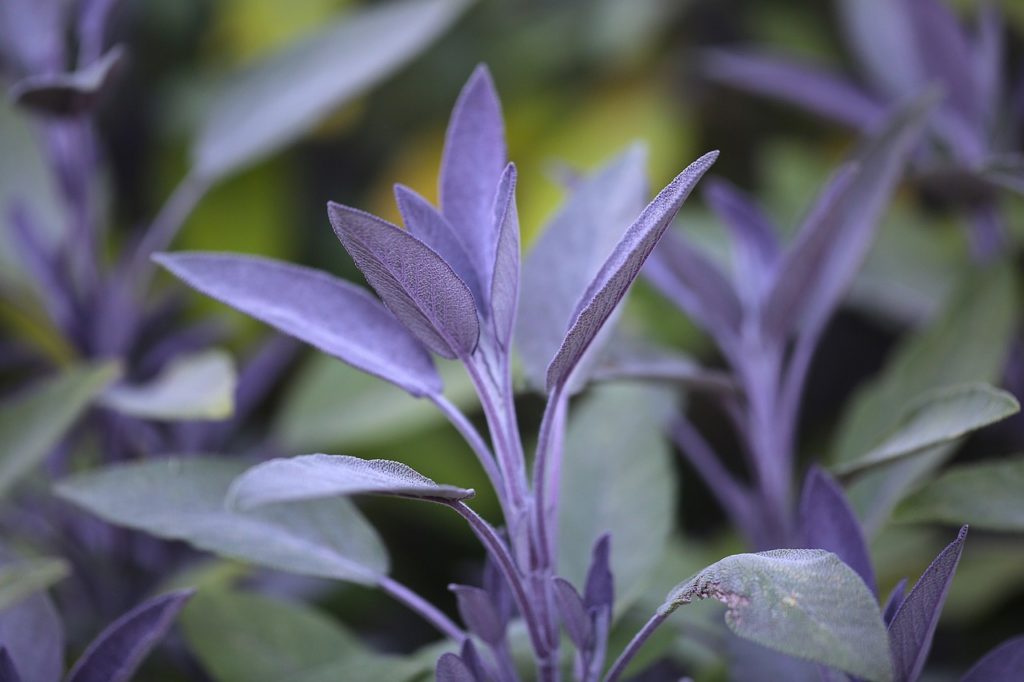There are lots of natural ways to deter caterpillars and treat then once they have arrived. Try homemade molasses spray, egg shell caterpillar traps or Bacillus thuringiensis (Bt). Caterpillars can be picked off by hand using garden gloves and placed in soapy water. Deter caterpillars by planting lavender and sage and plant dill and fennel to attract predatory insects.
Natural Caterpillar Treatments
- Molasses Spray
- Egg shell caterpillar traps
- Bacillus thuringiensis (Bt)
- Pick caterpillars off by hand
Natural Caterpillar Deterrents
- Companion planting to deter pests
- Distract caterpillars with Pansies
- Plant herbs & flowers that deter caterpillars
- Attract beneficial insects that prey on caterpillars
- Plant a range of basil types that are less attractive to caterpillars
- Plant in pots and move basil to a protected area
- Grow seedlings in protected areas first
- Use an insect hotel to attract beneficial insects
- Garden netting

Natural Treatments for caterpillars on Basil
Make a homemade caterpillar remover
Make a homemade caterpillar remover at home to save your basil. Make sure you wash the basil thoroughly before eating it. Check out this easy recipe using molasses is below:
What you will need:
- A spray bottle
- Molasses
- Dish soap
- Warm water
- Large bowl
Method
- Fill the bowl with 1/3 gallon of water.
- Add 1 tablespoon of molasses
- Add 1 tablespoon of dish soap
- Stir the ingredients through until they have all dissolved.
- Pour the mix into a spray bottle.
- Wait until the mix has cooled and spray onto all sides of plant leaves in cool weather.
TIP: Make sure the temperature is less than 78 degrees when you spray. Spray in the early morning if the day will be warmer so that the leaves are not damaged.

Egg shell caterpillar traps
Use broken egg shells to attract passing cabbage white butterflies who will lay their eggs on the shells. You can then collect up the shells after a few days and remove the eggs. While these caterpillars usually attack cabbages, they can also see your basil as a tasty treat if you still have basil growing in the cooler months.
Bacillus thuringiensis (Bt)
For a natural caterpillar treatment Bacillus thuringiensis is bacteria that has been developed into a spray called Dipel to kill caterpillars. This spray is designed only to kill caterpillars and will take a few days to work. This can be an easy way to kill caterpillars if you want to buy something pre-made.
Pick caterpillars off by hand
The most effective, natural way to get rid of caterpillars is to put on some garden gloves and pick your caterpillars off when you see them on your basil. Bring a warm, soapy bucket of water with you and pop them in once you have picked them off.
If you have chickens or ducks, caterpillars will make a tasty meal so put them in a container as you pick them off and feed them to your poultry as a tasty treat.
TIP: Always wear garden gloves and protective glasses when picking the caterpillars off. Some caterpillars are nasty and can spray irritants in the air when they are touched.

Natural ways to deter caterpillars from basil
Companion planting to confuse pests
Planting a wide variety of different plants together to confuse passing caterpillars so they can’t see your basil. Interplant basil with other vegetables like carrots, peas and flowers like marigolds to make it harder for caterpillars and butterflies to see your vegetables and land on them to lay their eggs.
Caterpillars are born from eggs laid by butterflies or moths who are great at spotting large areas of plants that look the same. Cabbage white butterflies love the look of a big patch of green so confuse them by planting a mix of plants in your garden.

Distract caterpillars with Pansies
Attract cabbage white butterflies to white pansies instead of your basil. Planting white pansies will attract the butterflies to lay their eggs on the pansies instead of your basil.
Newly hatched caterpillars will eat pansy leaves instead of your basil.

Plant herbs & flowers that deter caterpillars
Plant herbs and flowers that will deter caterpillars by producing a strong scent that will confuse the moth or butterfly. Strong smelling flowers like lavender, oregano, sage and thyme produce a strong scent and taste that caterpillars don’t like.
Tansy and wormwood also contain strong scented oils which will drive away caterpillars in your garden. Wormwood is a fantastic deterrent to caterpillars so plant it near your vegetable garden.
Attract beneficial insects
Plants like dill and fennel will attract beneficial wasps and flies that prey on caterpillars. Plant these near your basil to deter caterpillars and they also make a fantastic addition to your vegetable garden.
Plant a range of basil types
Planting other varieties of basil particularly those with purple leaves can confuse caterpillars who were expecting a bright green plant. Purple varieties are more pest resistant and are eaten less than green versions of these brassicas.
Try purple or Thai basil and they are not as tasty to caterpillars as sweet green basil.

Plant in pots
Plant your basil in pots so that you can physically move them out of the line of flight of moths and butterflies that are passing by. Pots kept in the sunny corner of your garden can escape the hungry mouths of caterpillars.
Grow seedlings in protected areas first
Growing basil seeds and seedlings in covered areas, greenhouses or small growing containers can protect them from being eaten by caterpillars when they are first sprouting. Caterpillars can destroy a newly sprouted basil quickly if they see them.
Grow them on your windowsill in pots for an easy way to pick and eat in their kitchen.
Use an insect hotel
Attract predatory insects like flies, wasps and lacewings that like to feed on caterpillars. These predatory insects will set up home in your insect hotel and help to control caterpillars. Place your insect hotel above your vegetable garden on a ledge that is out of reach of dogs.

Garden netting
Insect garden netting will protect your basil from caterpillars. If you have lots of caterpillars this can be the best way to protect your basil. It is also the best way to protect a large crop of basil without using pesticides. This is a great way to keep them off of a large crop of basil.
If you are growing lots of basil to make pesto, it is best to keep them covered and then you can remove the insect netting after harvest.
Caterpillars eating basil – summary
Stopping caterpillars from eating your basil can be easy using natural remedies. The best way is to prevent them from growing in numbers by using the methods to deter them. Try a natural remedy like the molasses spray if you see them on your basil but my favorite method of all is catching them in the act and picking them off by hand.
I am an accredited practicing dietitian, experienced gardener and a dedicated cook. I love writing and sharing my experience so you can learn from my successes and mistakes.

Comments are closed.